
Homegrown tomatoes are simply the best!
My Grandma and my Mom both had a knack for growing them, and by some matter of luck or fate, that tomato growing gene was also passed down to me.
The summer of 2008 was our best tomato harvest ever. The growing conditions were perfect.
Daytime temperatures between 75 -85 degrees Fahrenheit, night time temperatures a bit cooler. Light, occasional rain with lots of sunny days in between.
That “perfection” hasn’t happened since, but it doesn’t stop us from planting a few, or a few dozen tomato plants each season.
But you aren’t here for harvests past, you are sticking around for harvests future. To be a successful tomato grower, you need the right equipment.
You can go it alone with your bare hands, if you don’t mind the mud and muck under your fingernails, but there are easier ways to plant and take care of tomatoes.
Before you begin collecting tools, take an inventory of what you already have. Ask around for items that you could borrow, especially if you need them for just one job.
Also take note of the growth requirements of each tomato variety you are planting. Some will be big, while others will be enormous!
If you don’t have time, energy or space for starting your own tomato seeds, and you prefer to buy seedlings instead, you can skip the section on containers and proceed down the list.
1. Containers
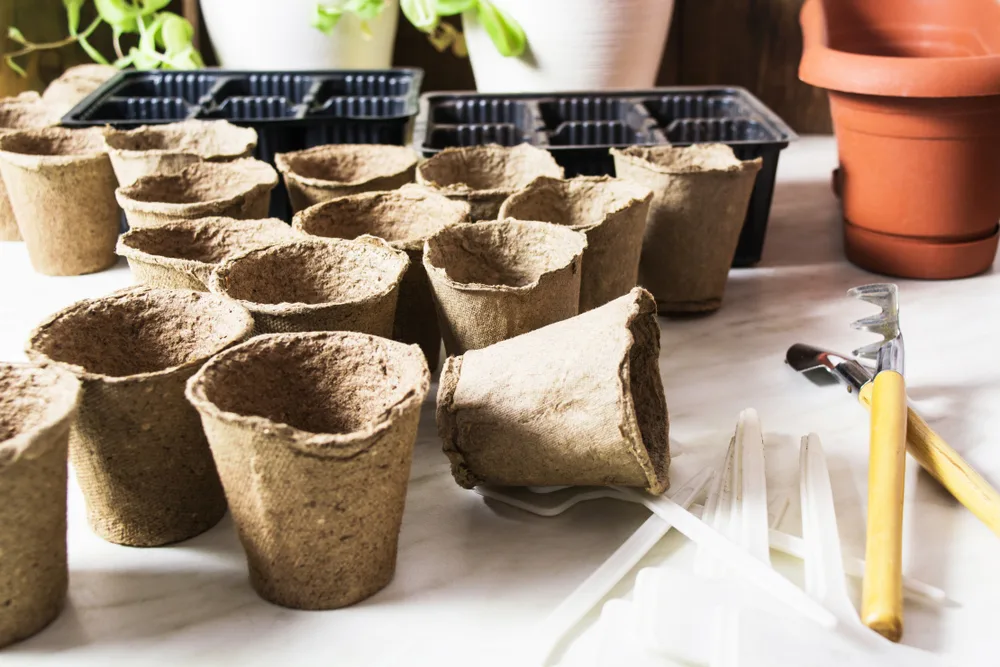
If your plan is to get a good head start on the growing season, you’ll want to find ways for starting plants indoors.
There are several things you can try, most of them for free, with varying levels of eco-friendliness and compostability. Work with the materials that you have, and grow from there.
- newspaper or brown paper pots
- egg shells or egg cartons
- toilet paper rolls
- random containers, enamel pans or baking sheets (may or may not need holes drilled into the bottom for drainage)
- starter trays and peat pots
Avoid reusing plastic pots if you can, recycling them instead.
Remember that they take hundreds of years to break down (into smaller and smaller pieces), so let’s focus on the alternatives and phase them out of the garden altogether.
Tomatoes need quite a bit of space, even in pots. If you are planting a few seeds in each, be sure to thin them out before they get too big, leaving the single strongest one.
2. Garden gloves
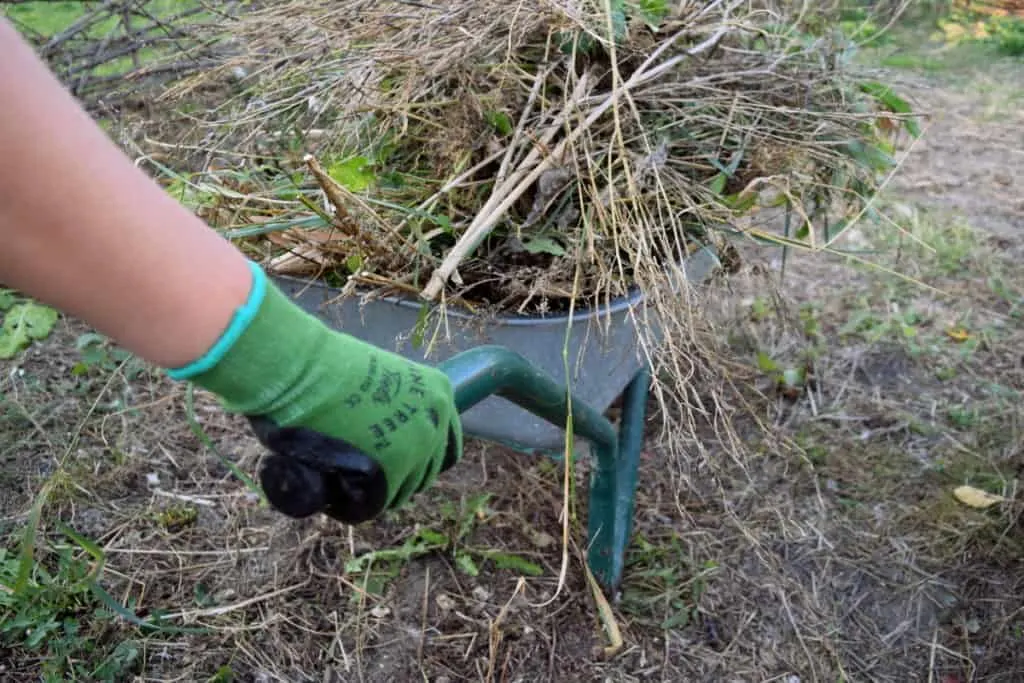
Whether you are tending to your tomatoes outdoors or in a greenhouse, you may find the smell of the leaves to be overwhelming. For some people, they may even cause a minor skin irritation.
For that reason, it is best to wear gardening gloves and long sleeves while pruning back the leaves and removing the suckers.
I have personally tested 5 pairs of gardening gloves to find the best – and for the detailed job of working with tomatoes, I recommend the bamboo gloves from Pine Tree Tools.
3. Garden trowel
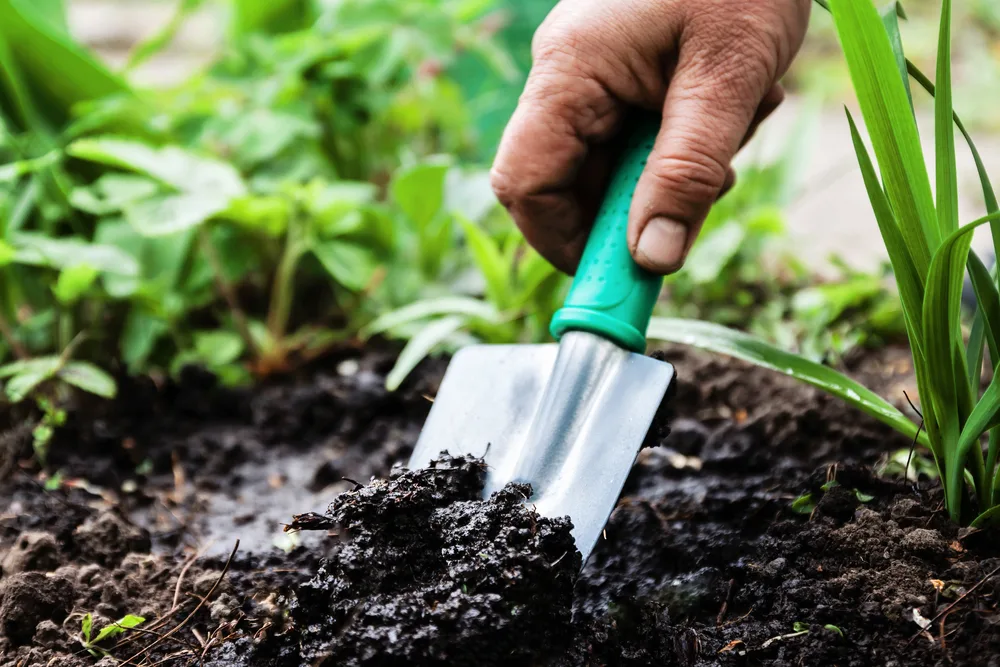
This is a useful tool you’ll likely already have in your garden shed. It comes in handy when filling your containers, just as it does when mixing compost and worm castings into the pre-dug tomato holes.
Don’t go for the cheapest option, they often have a flimsy handle that breaks within a day or two of heavy gardening. The metal may even bend in hard clay or rocky soils.
Spend a bit more and invest in a garden trowel that will last for years.
4. Watering can
Once your tomatoes are nestled safely in the ground, they are dependent on the rain – or on you – for moisture.
Watering cans are great, for the fact that you can aim the water at the base of the plant, and water the mulch directly. The leaves and fruits don’t always take kindly to having water poured on them, and can suffer burn spots if watered in full sun.
Dawn is the best time to water your tomatoes, and your entire garden in general. Never water in the hottest part of the day!
Just because you are thirsty, it doesn’t mean your plants are. In fact, they are reserving their energy.
Quality of water
While we are on the subject of water, know that rainwater is the absolute best for your garden plants. If you can collect rainwater, your tomatoes will greatly appreciate it!
It might also be helpful to know that tomatoes are not very fond of cold water, so fresh from the well might be a bit too chilly. Let the water sit for some time until it reaches a suitable “warmth” before quenching the soil (and plant) thirst.
If you are watering with tap water, allow it to settle for 1-2 hours before watering to allow chlorine to evaporate before bringing it into the gardenscape.
However, if you are into biodynamic gardening and the thought of using enlivened water piques your interest, go ahead and stir away!
5. Irrigation equipment
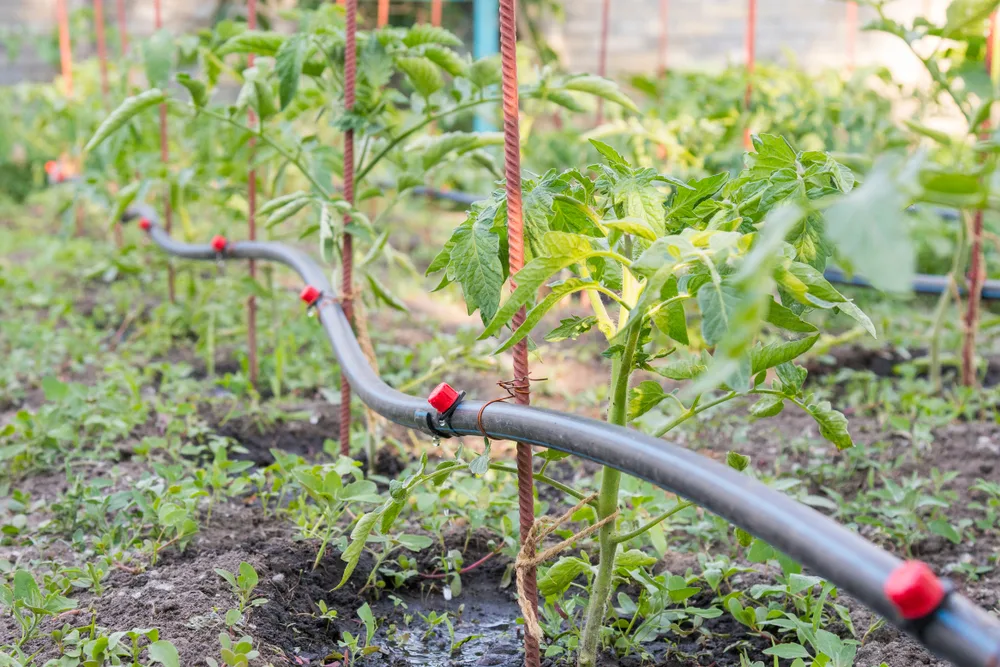
Tomatoes love it best when they are watered slowly and deeply. While this is harder to achieve with a watering can, it is not impossible. However, irrigation lines make watering the garden far easier.
There are several irrigation systems out there, each with their advantages and disadvantages. For instance, even though a sprinkler is easy to set up and requires only a hose, it also leads to wet leaves, which in turn can favor those tomato diseases we talked about earlier.
Using a sprinkler also covers your whole garden, promoting pesky “weeds” to take over.
A drip watering irrigation system comes with several benefits.
First of all, you will have little water lost to evaporation – and if you are concerned about how much water you are using, this can help dose it out well. Depending on your level of investment (the initial setup costs can be a potential downfall), you may even have the ability to set up your drip irrigation system on a timer – which means your garden can be watered while you are at work, or on vacation!
Watering is an incredibly complex topic, here is an article to better help you decide how to water your garden:
Garden Irrigation Solutions: DIY, Efficient, & Toxin-Free Watering Options @ Homestead and Chill
6. Spade
The humble spade. Every gardener needs one. Maybe even two – of different sizes and shapes, of course.
This spade has a place in the garden, as well as the orchard. Use it for moving around compost, planting trees, just about anywhere you need to dig in the soil.
7. Support systems
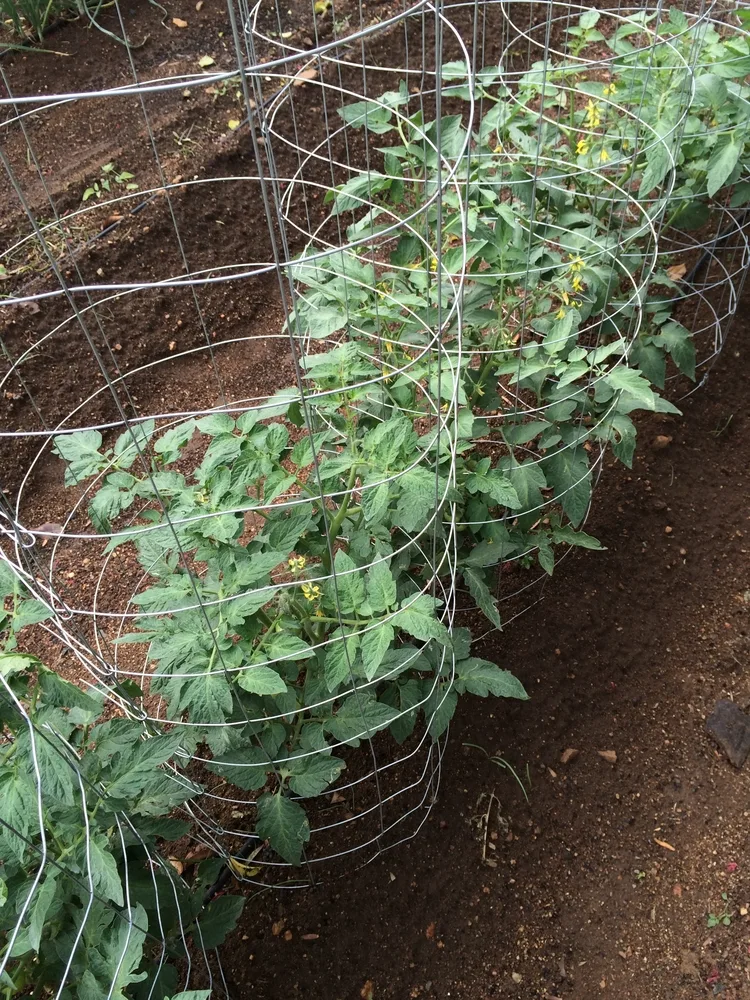
Tomato cages or trellises?
Well, it all depends on what varieties of tomatoes you plan to plant.
Indeterminate tomatoes are known as “vine” tomatoes, meaning that they need plenty of space to grow up. They can grow 8 feet or more, and they ripen gradually throughout the season. Vining tomatoes benefit greatly from a sturdy structure and/or tying up.
Determinate tomatoes are also referred to as “bush” tomatoes, due to their growth structure. They are more compact plants, often growing 2-4 feet tall. Cages will help them to not lay on the ground, particularly in windy, stormy weather where they may be knocked down. It is useful to know that determinate tomatoes usually ripen at the same time, over a 1-2 week time frame.
Dwarf tomato varieties grow just 2 feet high, and do not necessarily need support – they can often be grown in hanging baskets for easy to reach harvests.
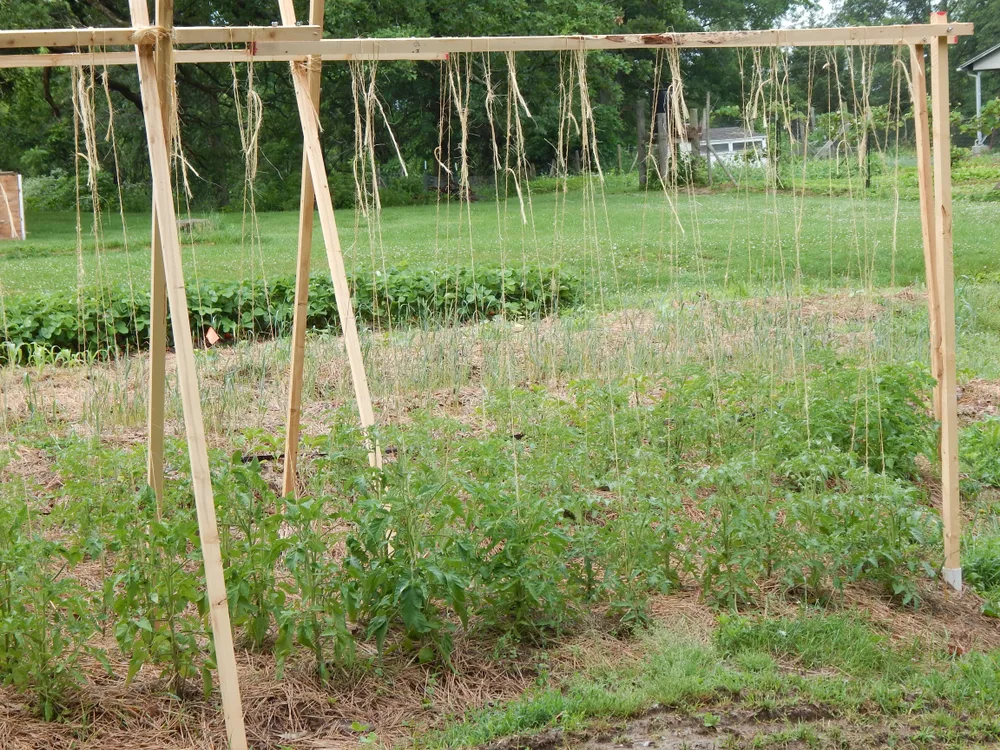
These tomato cages are the best reviewed on Amazon and if you’d rather trellis your tomato plants, then this is the best option for you.
For the DIY crowd, there are plenty of ideas for staking and supporting your tomatoes to be found here.
8. Pruners
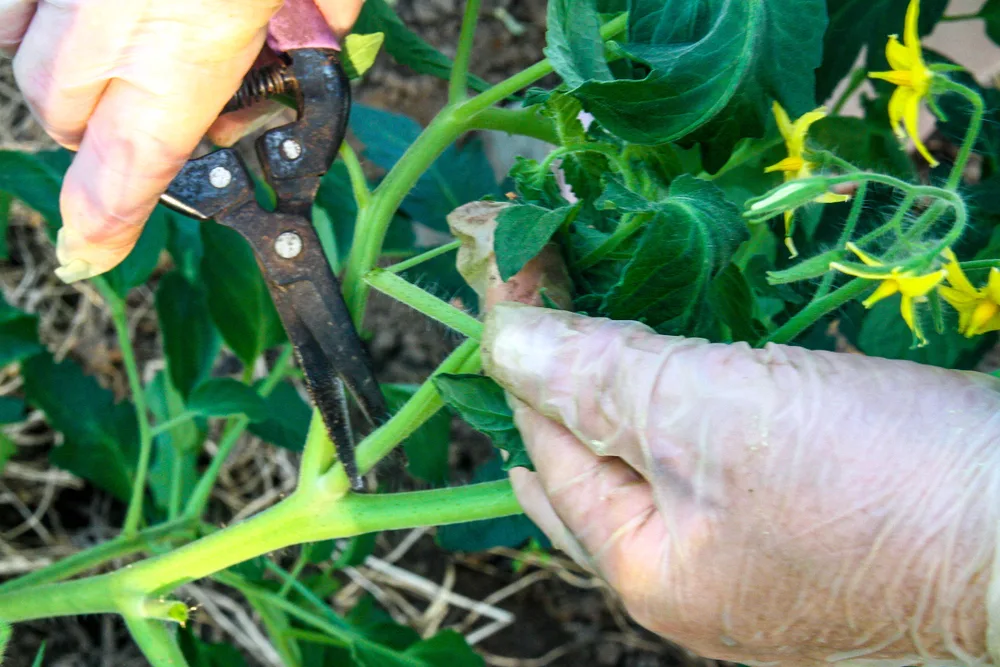
Make sure to wear gloves when working with tomatoes, and be sure to use your most trusted pruners when pruning the leaves.
For those indeterminate “vining” varieties, there will be a lot more work involved in removing shoots and leaves.
If you are pruning determinate varieties, the workload will be lighter. If you remove too many leaves, it may actually harm your expected crop.
Here’s our guide to pruning tomato plants.
9. Spray pump or bottle
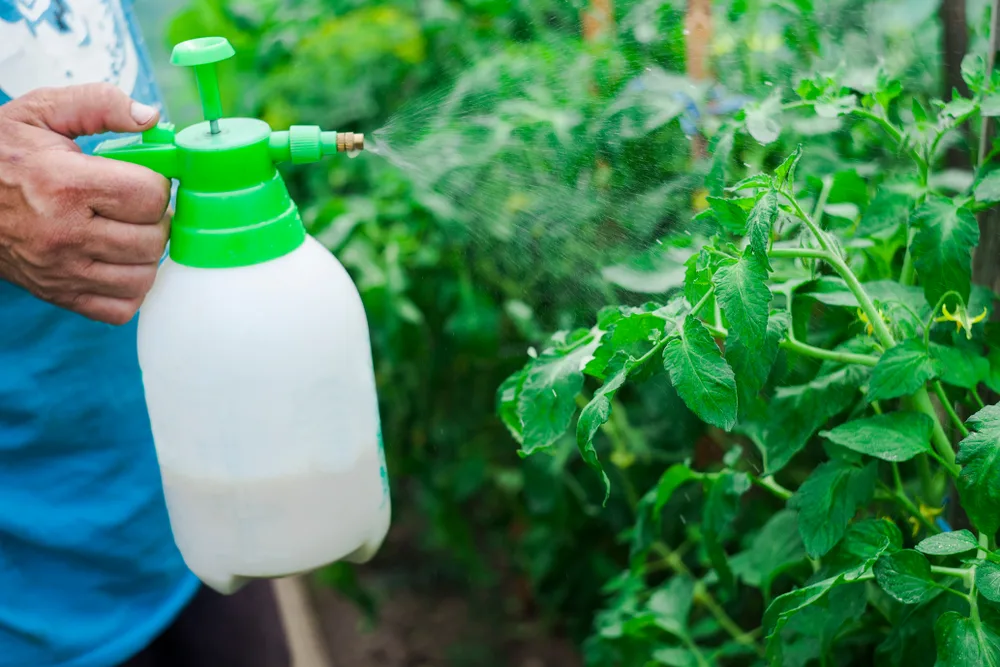
While most diseases won’t ruin your entire crop of tomatoes, they can make them appear less-than-beautiful with lumps and bumps and soft spots. And we want to eat mouthwatering, red juicy tomatoes!
Strive for the best, yet be prepared for whatever may happen.
You can make your own natural pest control sprays with benign materials and use them on more than just your tomatoes.
For this, a dedicated spray bottle is absolutely necessary. Just be sure to label it and keep it separate from your natural housecleaning supplies.
Everything you need to know about tomato pests and diseases can be found at Planet Natural Research Center.
If you want to get more high-tech:
While these last three items are more than just “pieces of equipment”, they are not necessarily needed to grow tomatoes. Yet they can help immensely in simplifying the growing process.
If you would like to achieve higher tomato yields, treat it like a business and become a professional in the field – or in the greenhouse!
10. Grow lights
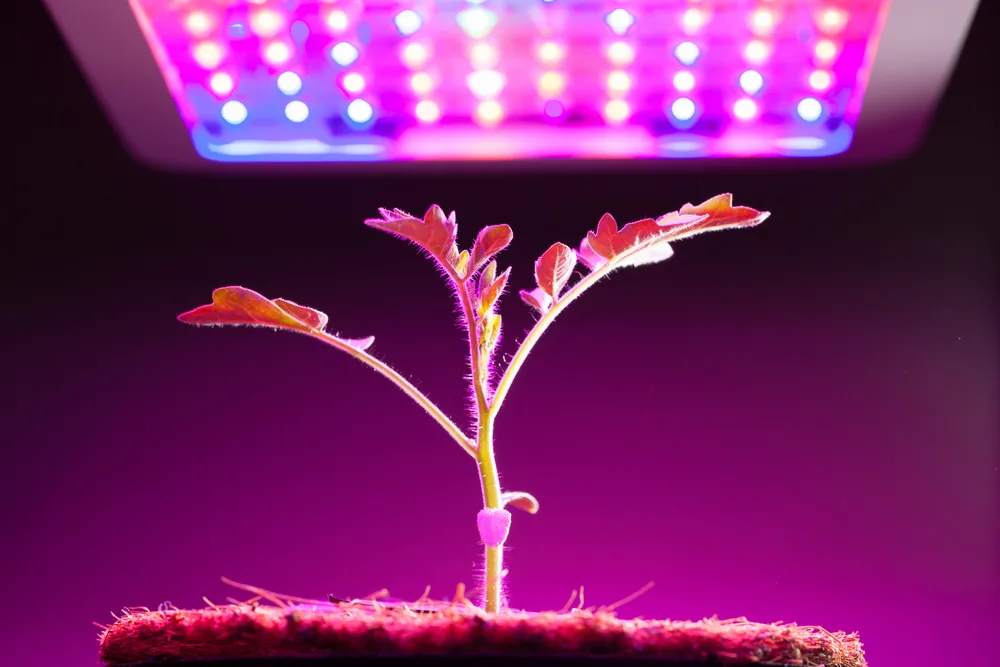
Natural light provides a full color spectrum for growing plants, however, if you lack southern facing windows and still desire to grow tomato plants from seeds, grow lights are your next best option.
Use them for just the seed to seedling phase, then plant outdoors in direct sunlight, or use grow lights for a longer duration in a greenhouse setting, the choice is yours alone.
Grow lights could allow you to extend the growing season, or even to grow year round, but it does take energy from the grid, and more intensive interaction from you.
These small LED grow lights are ideal for seed starting.
Read this article to find out more about starting tomato plants under LED grow lights:
How to Grow Tomatoes Indoors With LED Grow Lights; Steps to Improving Tomato Quality and Quantity of Harvest @ Grow Big or Grow Home
11. Greenhouse
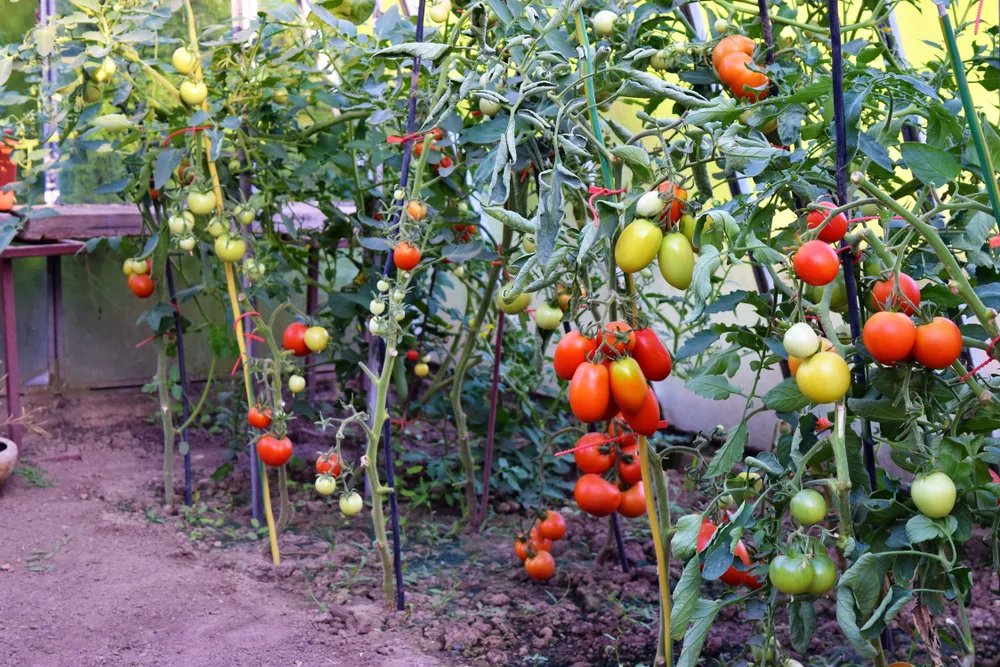
If you plan to have a grand garden and want to start a mass amount of seedlings at once (think tomatoes, peppers, cabbage, squash), a greenhouse may be one of your top priorities and investments to make.
It will provide you with plenty of semi-indoor space and a more controlled environment than the great outdoors.
Who knows? It may even be one of the best ways for you to earn extra money from your homestead – that of selling garden seedlings from home, as well as at a local farmers market.
With so many greenhouse plans to choose from, you will have to plan ahead and design, or find a design, that works best for you.
Pre-fabricated, handmade, a mix of both… Just be sure to have plenty of biodegradable trays and seeds on hand!
12. Hydroponic irrigation system
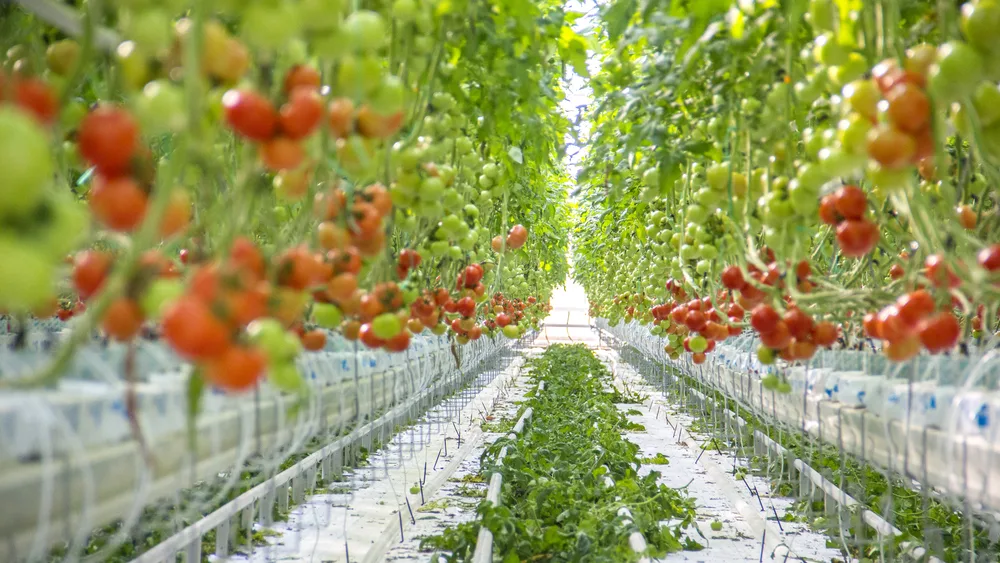
You know that you can successfully grow tomatoes, and a myriad of other vegetables, without soil, right?
People have been doing this for several decades now, and while a lot of it is science-based, there is still an art to it. Getting the right solutions, the correct amount of light, suitable temperatures, etc.
It has been said that hydroponically grown tomatoes taste just as good as those grown outdoors. I cannot comment as to that.
Being a garden purist and supposing that plants may just like “feeling rooted”, I will continue to garden as usual and leave the hydroponics to those without access to land, and to those who enjoy challenging the ways we currently grow food.
See, there are gardening tools for everyone, from garden trowels to self-watering remote controlled systems. You just need to choose what resonates with you and is supporting your tomato growing aspirations.
If you’d like to try growing a hydroponic tomato garden, then this serious bit of kit is for you.
How to know if hydroponic growing is right for you?
Here are 20 Advantages and Disadvantages of Hydroponics That You Should Know @ Green and Vibrant
Final tomato growing thoughts
Never underestimate the power of pollinators in the garden!
If you need to bring bumblebees in, do it. One of our neighbors did it every tomato flowering season with exceptional results.
Let’s also not forget to mention companion planting as a way to increase tomato yields and boost your chances of growing success.
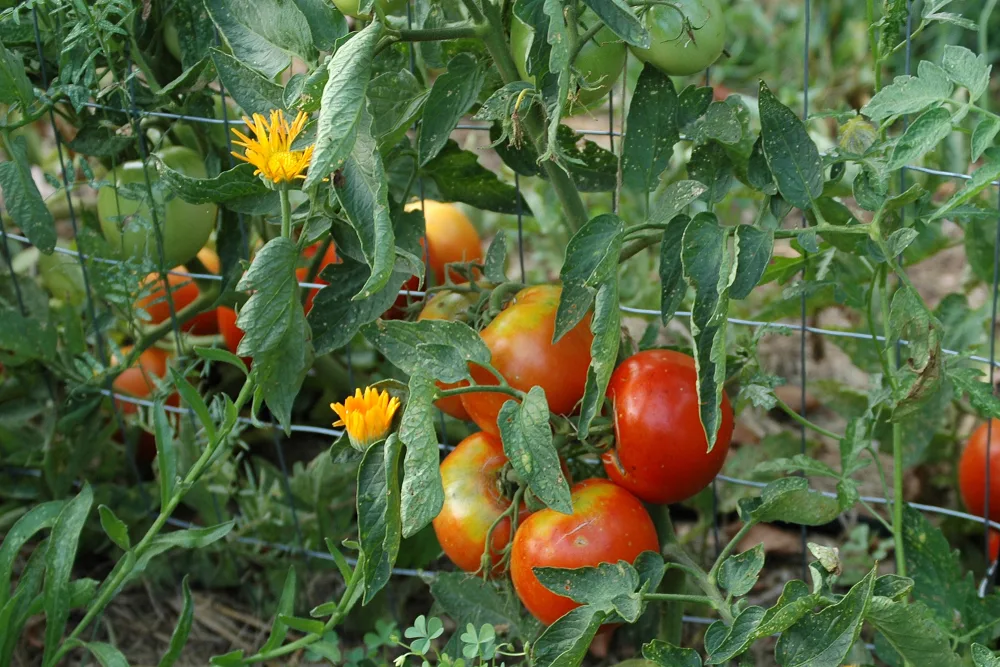
In short, tomatoes like to share space with:
- basil
- borage
- nasturtiums
- marigolds
- carrots
- lettuce
- parsley
Plant them furthest away from corn, all brassicas, potatoes, eggplants and peppers.
Now, that you are ready for planting tomatoes, what will it be? There are over 10,000 tomato cultivars to choose from…

Get the famous Rural Sprout newsletter delivered to your inbox.
Including Sunday musings from our editor, Tracey, as well as “What’s Up Wednesday” our roundup of what’s in season and new article updates and alerts.

